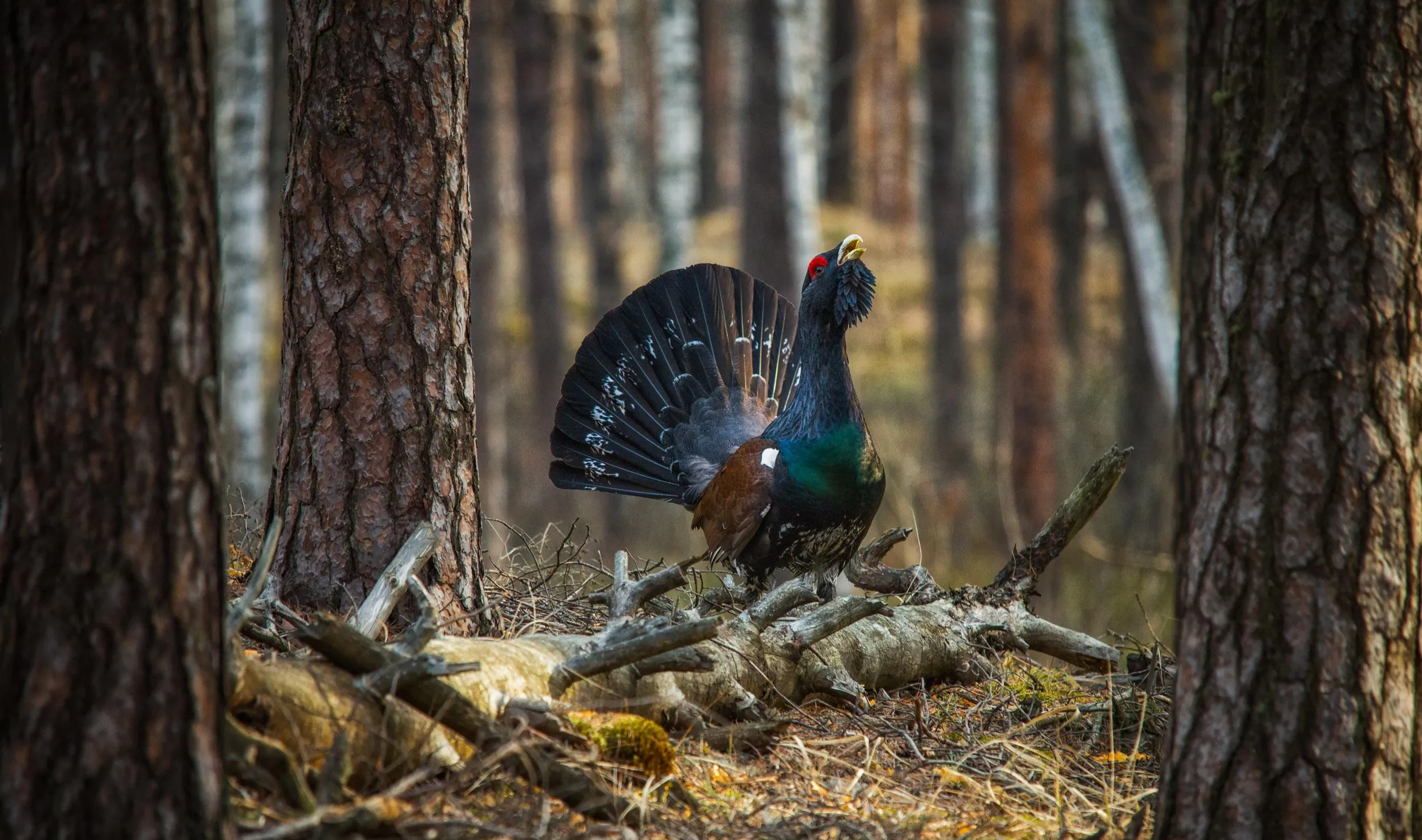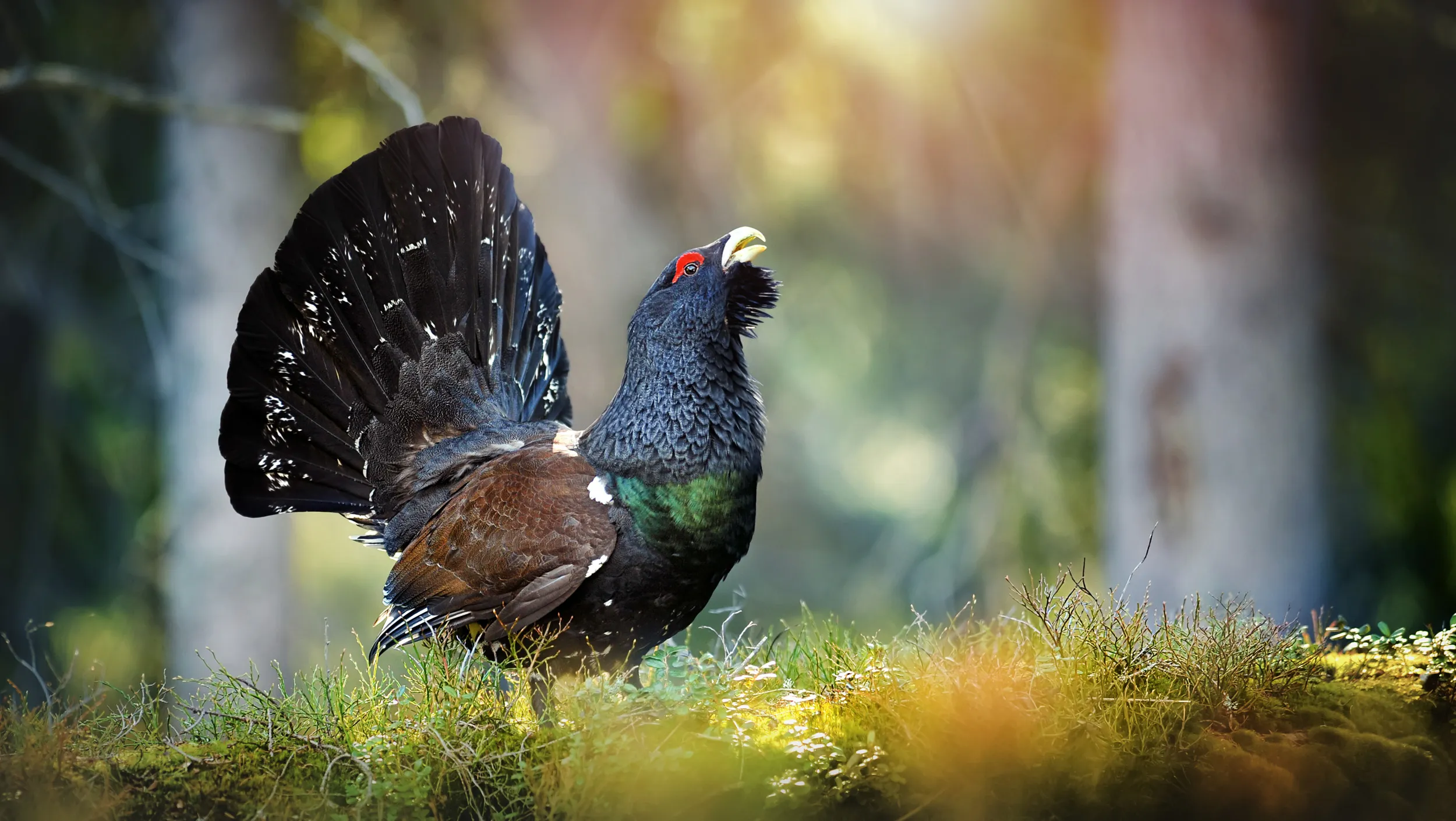
Capercaillie biodiversity action plan
Together with private landowners, Scottish Government and corporate support, we are working hard to reverse capercaillie decline through conservation and advisory work.

⚠ Capercaillie are a rare and declining bird known to be highly sensitive to disturbance. Given the vulnerability of this species, and the recent decline, the advice is not to go looking for capercaillie. More information on this can be found here. ⚠

